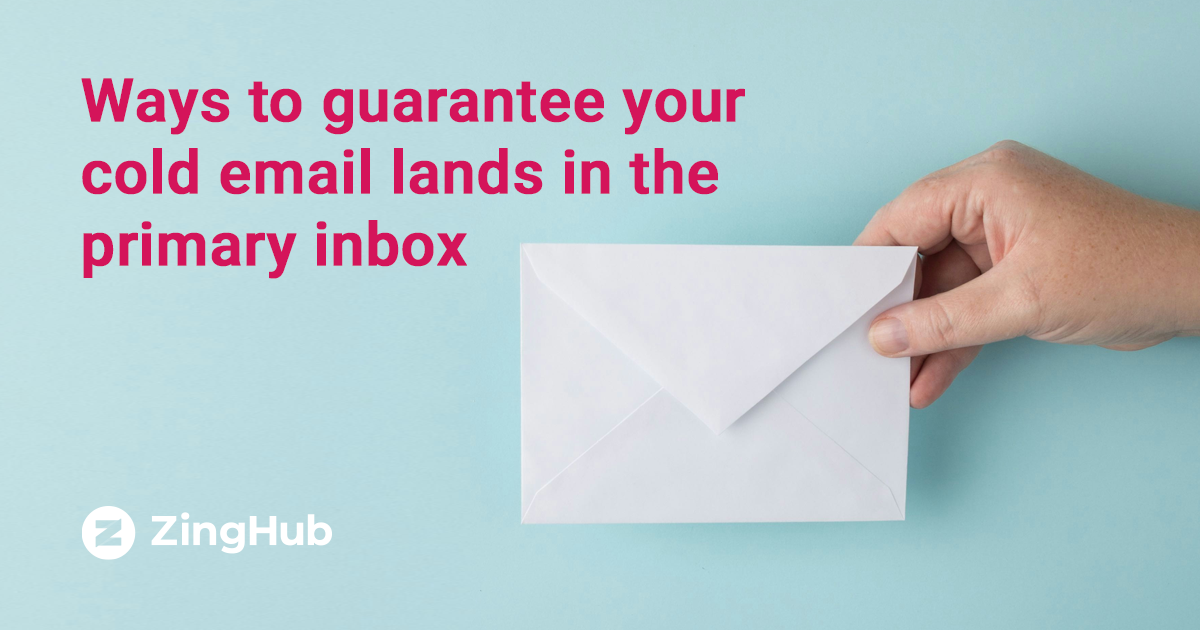
Key Highlights:
A significant percentage of emails fail to reach the inbox. Studies indicate that on average, 10% to over 20% of legitimate marketing emails can end up in the spam folder, with the overall deliverability rate around 83% to 86%. This means 1 in 6 of your carefully written messages may never be seen. The primary challenge in cold outreach today is not writing the email, but ensuring inbox placement. Getting past sophisticated filters requires a deliberate, technical, and quality-focused strategy.
If you want to know the proven ways to guarantee cold email lands in primary inbox, you must focus on improving your email deliverability.
The first step to better inbox placement is proving to mailbox providers (like Google and Microsoft) that you are who you claim to be. This is a non-negotiable step to avoid spam flags.
Set up SPF (Sender Policy Framework)
This record specifies which servers are allowed to send email on behalf of your domain. If a receiving server sees an email from your domain sent by an unauthorized server, it rejects the message.
Implement DKIM (DomainKeys Identified Mail)
This adds a secure digital signature to your outgoing emails. The recipient's server uses this signature to verify that the message content has not been tampered with during transit.
Use DMARC (Domain-based Message Authentication, Reporting & Conformance)
This protocol tells receiving servers exactly what to do with messages that fail SPF or DKIM checks (e.g., quarantine, reject, or allow). Implementing DMARC provides crucial feedback for monitoring your domain's health.
Without these technical standards, your emails look instantly suspicious, severely impacting your email deliverability.
Mailbox providers analyze your sender reputation—a score based primarily on how recipients interact with your emails. High engagement means better inbox placement.
Avoid Spam Traps and Invalid Emails
Sending emails to bad addresses (spam traps or hard bounces) is the quickest way to destroy your reputation. Regularly clean your lists and use a verification service.
Monitor Your Engagement
If recipients consistently open and reply to your messages, it signals positive behavior. Conversely, low open rates and high delete-without-opening rates tell providers that your email is unwanted, which is a major factor in how to stop emails going to spam folder.
Warm Up New Domains
If you are using a new domain for cold outreach, send emails in small, increasing volumes over several weeks. This "warm-up" process builds trust with mailbox providers slowly and naturally.
Spam filters scan the content and formatting of your email for red flags. To avoid spam, keep your content clean and balanced.
Balance Text and Images
Emails that are entirely image-based or contain very little text are often filtered. Maintain a healthy text-to-image ratio (ideally 80% text, 20% images).
Watch the Subject Line
Avoid excessive punctuation (!!!), all capital letters, and overly aggressive, salesy language (e.g., "FREE," "Act Now," "Guaranteed Income").
Check Your Links
Ensure all links are secure, fully functional, and point to a reputable domain. Sending emails with broken links or links to suspicious sites is an immediate red flag.
Use Clean HTML
Avoid copying and pasting text from word processors or messy websites, as this often inserts hidden, unnecessary code that can trigger filters.
The way you structure your outreach directly impacts your email deliverability.
Maintain Sending Volume
Sending a sudden, massive volume of emails from a previously quiet domain is suspicious. Keep your daily sending volume consistent and within reasonable limits.
Offer Clear Unsubscribe Options
Even for cold emails, making it easy for people to opt out (rather than mark as spam) protects your sender reputation. A high unsubscribe rate is better than a high spam complaint rate.
Send Personalized, Relevant Content
The single best way to ensure consistent inbox placement is to send a personalized email that the recipient genuinely wants to read. Relevant content drives engagement, which is the highest form of email validation.
Diligently implementing these technical safeguards and content best practices moves you beyond hoping for good fortune. You take control of your email deliverability, setting your outreach up for maximum success.
AI-Powered Outreach that Starts Real Conversations. ZingHub.